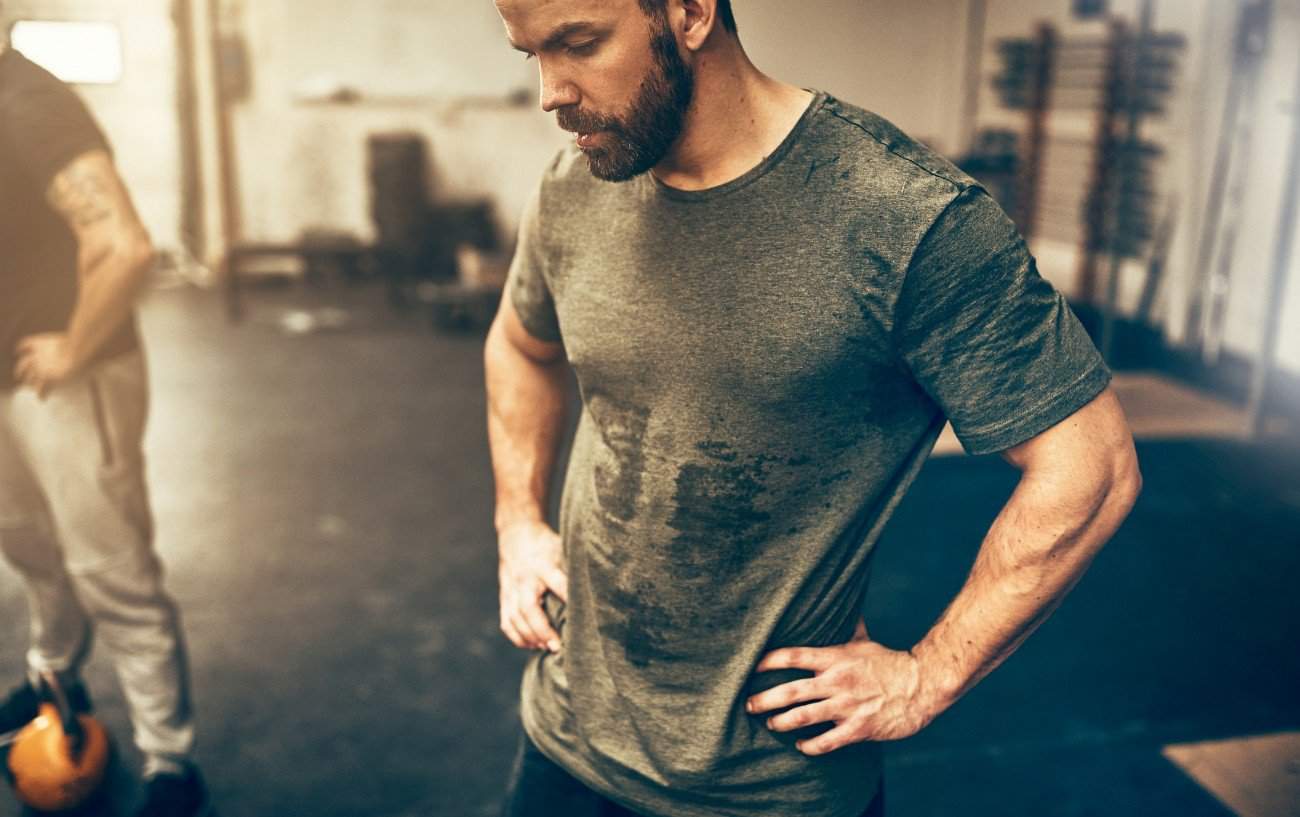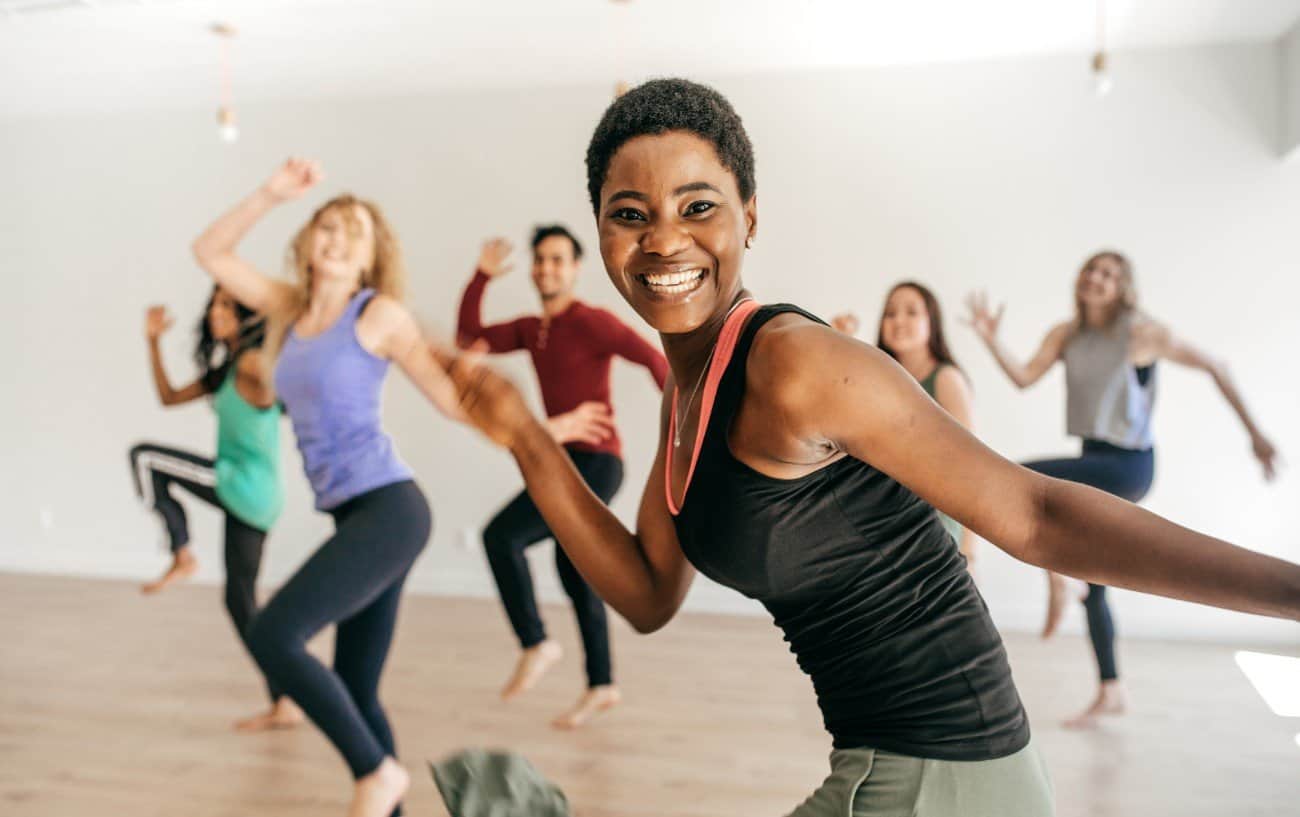As a certified personal trainer, when beginners approach me looking for tips on how to get started on a fitness routine, I often suggest starting with the basics: walking.
Walking can be a great aerobic workout because it increases your heart rate while still being a low-impact exercise relative to jogging or running.
Increasing the intensity of walking workouts by performing power walking is one of the best ways to advance walking for exercise once you build up a higher cardiovascular fitness level.
Power walking is essentially brisk walking with the concerted effort of increasing your heart rate and engaging your lower body muscles as well as your upper body with a deliberate arm swing.
In this guide, we will discuss the benefits of power walking for aerobic exercise, the proper technique, how power walking workouts compare to running or jogging, and tips to get started.

What Is Power Walking?
Power walking is a type of exercise that involves making a concerted effort to walk at a faster pace than you would with a casual walk.
While there isn’t a specific walking speed that differentiates power walking from regular walking, there is a specific power walking technique that is used.
Moreover, for any given individual, the main difference between power walking vs regular walking is that power walking should be brisk walking towards the end range of walking as fast as you can.
As such, the benefits of power walking include the physical and mental benefits of moderate-intensity physical activity because you should be elevating your heart rate into at least the moderate-intensity physical activity zone.

What Is The Difference Between Power Walking And Regular Walking?
So, how fast should your power walking speed be?
Your power walking speed will depend on factors such as your fitness level, age, sex, the terrain that you are walking on, your power walking technique, and any physical limitations that you may have.
For most people, the average power walking pace lands in the range of 4 to 5.5 mph (15 to 13 minutes per mile).
One study of 997 middle-aged walkers found that the average walking speeds were 1.30 m/s for normal walking gait and 1.99 m/s for maximum walking speed.1Rasmussen, L. J. H., Caspi, A., Ambler, A., Broadbent, J. M., Cohen, H. J., d’Arbeloff, T., Elliott, M., Hancox, R. J., Harrington, H., Hogan, S., Houts, R., Ireland, D., Knodt, A. R., Meredith-Jones, K., Morey, M. C., Morrison, L., Poulton, R., Ramrakha, S., Richmond-Rakerd, L., & Sison, M. L. (2019). Association of Neurocognitive and Physical Function With Gait Speed in Midlife. JAMA Network Open, 2(10), e1913123. https://doi.org/10.1001/jamanetworkopen.2019.13123
To put this into perspective, the regular walking speed works out to walking one mile in 20.6 minutes while the brisk walking pace works out to walking one mile in about 13.5 minutes (with a walking speed of approximately 4.45 mph.)
A power walk should feel like a brisk walk.
Finally, it’s important to distinguish power walking vs running or jogging. Rather than being differentiated by speed, the main difference is in the technique.
As a form of walking, when you are using the proper power walking technique, at least one foot must be in contact with the ground at all times.
With jogging and running, there is a brief “flight phase,“ in which both feet are off of the ground.
This is why running is a high-impact activity whereas power walking is a low-impact exercise2NILSSON, J., & THORSTENSSON, A. (1989). Ground reaction forces at different speeds of human walking and running. Acta Physiologica Scandinavica, 136(2), 217–227. https://doi.org/10.1111/j.1748-1716.1989.tb08655.x because you are never landing with your full body weight from an airborne position.

How To Power Walk: Technique And Tips
One of the primary differences between power walking vs regular walking is the technique used.
With regular walking, your arms are relatively relaxed and extended down by your sides whereas the arm movements for power walking are more dramatic.
There is a specific arm swing technique that is closer to the arm swing for running such that you should have your elbows bent at a 90-degree angle and pumping vigorously to help propel your body forward.
Here are some of the key aspects of power walking technique:
Posture
Your posture should be upright with your chest up and proud and shoulders back and down, away from your ears.
Hinge slightly forward from your hips but keep your core muscles engaged to help maintain good posture and a straight spine. Do not hunch or slouch forward from your back.
Upper body: Maintain a 90-degree angle in the elbows and use a powerful arm swing alongside your torso. Your arms can cross over the midline of your body more with power walking vs running where they should really go just straight forward and back.
Head and neck: Keep your face relaxed and your eyes forward.
Lower body: Allow your hips to rotate some but you should not have an exaggerated hip swivel. Keep your stride short and quick.3TUDOR-LOCKE, C., SCHUNA, J. M., HAN, H., AGUIAR, E. J., GREEN, M. A., BUSA, M. A., LARRIVEE, S., & JOHNSON, W. D. (2017). Step-Based Physical Activity Metrics and Cardiometabolic Risk. Medicine & Science in Sports & Exercise, 49(2), 283–291. https://doi.org/10.1249/mss.0000000000001100 Engage your glutes and hamstrings. Land on your heel and roll forward towards your toe or push off with every step.

What Are The Benefits Of Power Walking Workouts?
As a form of aerobic or cardiophysical activity, even regular walking provides numerous physical and mental health benefits.
Due to the higher intensity of power walking vs walking at a conversational pace, the benefits essentially fall in line with the benefits of moderate-intensity physical activity or even high-intensity physical activity.
This depends on how high your heart rate gets and the type of power walking workout structure you follow (steady-state walking or interval training).
Here are some of the top physical and mental health benefits:
- Improving cardiovascular health.4TUDOR-LOCKE, C., SCHUNA, J. M., HAN, H., AGUIAR, E. J., GREEN, M. A., BUSA, M. A., LARRIVEE, S., & JOHNSON, W. D. (2017). Step-Based Physical Activity Metrics and Cardiometabolic Risk. Medicine & Science in Sports & Exercise, 49(2), 283–291. https://doi.org/10.1249/mss.0000000000001100
- Increasing longevity and reducing the risk of overall mortality.5Sun, Q. (2010). Physical Activity at Midlife in Relation to Successful Survival in Women at Age 70 Years or Older. Archives of Internal Medicine, 170(2), 194. https://doi.org/10.1001/archinternmed.2009.503
- Reducing the risk of chronic diseases.6Object, object. (n.d.). The effect of walking on risk factors for cardiovascular disease: An updated systematic review and meta-analysis of randomised control trials. Core.ac.uk. https://core.ac.uk/reader/185482381?utm_source=linkout
- Reducing blood pressure and cholesterol.7Williams, P. T., & Thompson, P. D. (2013). Walking versus running for hypertension, cholesterol, and diabetes mellitus risk reduction. Arteriosclerosis, Thrombosis, and Vascular Biology, 33(5), 1085–1091. https://doi.org/10.1161/ATVBAHA.112.300878
- Improving aerobic capacity (Vo2max).8Kim, C., Kim, B. O., Lim, K.-B., Kim, Y. J., & Park, Y. B. (2012). The Effect of Power-walking in Phase 2 Cardiac Rehabilitation Program. Annals of Rehabilitation Medicine, 36(1), 133. https://doi.org/10.5535/arm.2012.36.1.133
- Improving balance and stability.9Gába, A., Cuberek, R., Svoboda, Z., Chmelík, F., Pelclová, J., Lehnert, M., & Frömel, K. (2016). The effect of brisk walking on postural stability, bone mineral density, body weight and composition in women over 50 years with a sedentary occupation: a randomized controlled trial. BMC Women’s Health, 16(1). https://doi.org/10.1186/s12905-016-0343-1
- Helping burn calories to support weight loss or healthy weight management.
- Increasing muscle activation over regular walking.
- Proving a low-impact form of exercise relative to running.10Swain, D. P., Kelleran, K. J., Graves, M. S., & Morrison, S. (2016). Impact Forces of Walking and Running at the Same Intensity. Journal of Strength and Conditioning Research, 30(4), 1042–1049. https://doi.org/10.1519/jsc.0000000000001185
- Improving cognitive performance and attention.11Yu, Y., Zuo, E., & Doig, S. (2022). The Differential Effects of Tai Chi vs. Brisk Walking on Cognitive Function Among Individuals Aged 60 and Greater. Frontiers in Human Neuroscience, 16. https://doi.org/10.3389/fnhum.2022.821261
- Improving mental health and wellbeing.12Zhu, Z., Chen, H., Ma, J., He, Y., Chen, J., & Sun, J. (2020). Exploring the Relationship between Walking and Emotional Health in China. International Journal of Environmental Research and Public Health, 17(23), 8804. https://doi.org/10.3390/ijerph17238804

Tips For Power Walking For Beginners
Although we all know how to walk, power walking for weight loss, health, and fitness is more intense, so it is helpful to have some tips to get started.
#1: Wear the right gear.
To reduce the risk of injury and optimize your comfort, it is important to have the proper footwear for your power walking workouts.
You should wear walking shoes or running shoes that provide the cushioning and support you need for your biomechanics, foot strike, body weight, and fitness goals.
Generally, running shoes are better than walking shoes for power walking because the soles are more flexible for the heel-to-toe transition for a push-off, which will allow you to walk faster.
Running shoes also tend to be more breathable and lightweight, which again can help you feel more comfortable walking for longer duration and at faster walking speeds.
Regular walking shoes are also fine, especially for beginners or those who will be power walking at a lower intensity. Improper footwear can increase the risk of injuries such as shin splints, plantar fasciitis, knee pain, and IT band syndrome.
You will also want to wear comfortable athletic clothing that does not restrict your movement or cause chafing.

#2: Add intervals.
Beginners can start power walking by just adding intervals of brisk walking into a regular walking workout.
After a thorough warm up, increase your walking pace and swing your arms, shorten your stride, and try to drive your heart rate up for 30-60 seconds. Then, slow back down to your normal walking speed.
Intersperse power walking with regular walking for the duration of your walk.
As your fitness level improves, increase the length of the power walking intervals and decrease the frequency and duration of the easy walking breaks.
If you have a higher cardio fitness level, you can add inclines and hills to your power walking workouts.
#3: Warm up and cool down.
Warm up to increase your heart rate and circulation to reduce your risk of injury, and cool down to guide your heart rate back to resting levels.

#4: Use a fitness watch.
A running watch or basic pedometer can help you keep track of your steps and walking distance.
As a personal trainer, I recommend wearing a heart rate monitor to gauge the intensity of your power walking workouts.
This can help you have a better estimation of how many calories you burn based on your bodyweight and intensity and will help you classify whether you are doing moderate-intensity or vigorous physical activity to meet the physical activity guidelines for adults.13U.S. Department of Health and Human Services. (2018). Physical Activity Guidelines for Americans 2nd edition. In health.gov (pp. 1–118). https://health.gov/sites/default/files/2019-09/Physical_Activity_Guidelines_2nd_edition.pdf
Overall, power walking workouts are beginner-friendly and a great low-impact exercise to improve heart health and overall health, burn calories, and boost mood.
After you master power walking, what about a walk/run training plan to run your first 5k? Check out this next guide to get started:













Thank you so much for this informative article. I’m currently averaging about 15:10 a mile and would like to increase speed and intensity without injury. I learned a lot of great information here!
glad to hear it Julie, good luck with your power walking journey!
I injured a calf running about 8 weeks ago and started back with NB 577 walkers. They are so comfortable, I want to get into power walking as you describe here. Maybe run shorter distances from time to time, but, I am loving setting out on a walk.